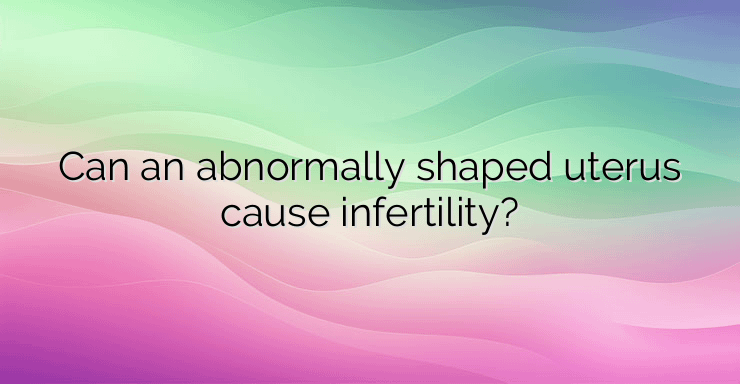When a woman’s uterus is abnormally shaped, it can cause obstetric or reproductive problems. These abnormalities can complicate childbirth and the health of the child. They can also lead to irregular or no periods. About 3 in 100 women are born with an abnormally shaped uterus. Many times a woman finds out about this congenital anomaly only when she is examined by a specialist. The main types of uterine shape abnormalities include: A bicornuate uterus is partially divided so that it is heart-shaped. This occurs when the two tubular structures that normally join to form the uterine body do not fuse during fetal development. A bicornuate uterus is sometimes associated with poor obstetric outcomes such as miscarriage and preterm birth. A septate uterus occurs when the residual septal wall tissue is not absorbed into the single uterine cavity as it is during normal end-stage development. This leads to a septum in the center that divides the space into two uterine cavities. This abnormality is associated with recurrent miscarriages. A unicornuate uterus is when only one side of the uterus develops fully, usually with the cervix connected to the vagina. This cannot be corrected and can cause premature birth and difficulty in the birth itself. A double uterus is when a woman has two separate uterine cavities, each with a separate cervix. This type of anomaly has not been shown to be effectively corrected by surgical treatment. Many women with an abnormally shaped uterine body have no problems conceiving or giving birth to a healthy child. However, some uterine abnormalities benefit from treatment, which is usually through minimally invasive surgical correction. Other conditions in the uterus can affect fertility, such as uterine fibroids. Sometimes the surgery can also cause a problem with the uterus. During the development of the female fetus, the Müllerian ducts begin the formation of the female reproductive tract, which includes the uterus, fallopian tubes, cervix, and the part of the vagina that connects to the cervix. Malformations during development can lead to various types of abnormally shaped uterus and similarly affect the vagina. At about the 10th week of female fetal development, two tubular structures of the Müllerian duct form side by side and then unite to create the uterine cavity. At this point, there is still part of the septal wall, which is tissue that is usually eliminated in the final stage of fetal development. An obstructive anomaly can form when the uterus and vagina are not united. This is called the transverse vaginal septum. Such obstructive abnormalities cause menstrual blood to remain in the uterus and not leave the body through the vagina. This buildup can cause severe pelvic pain. In addition to reproductive problems from uterine abnormality,birth complications and health problems for the child may occur. These include: Miscarriage; Breech presentation of the fetus; Need for cesarean delivery; Premature birth; Slow growth of the baby; Birth defects due to restrictions on the growth of the fetus in the womb. When symptoms occur from an abnormality in the uterine body, they may include: Recurrent miscarriages; Absence of menstruation; Pain when inserting a tampon, during sex, during menstruation; Monthly pain in the abdomen, in case of obstructive abnormality of the uterus. References: https://fertilitynj.com/infertility/female-infertility/structural-causes/abnormally-shaped-uterus-cause-infertility/ https://www.msdmanuals.com/en-sg/professional/gynecology-and- obstetrics/menstrual-abnormalities/abnormal-uterine-bleeding-due-to-ovulatory-dysfunction-aub-o


Leave a Reply